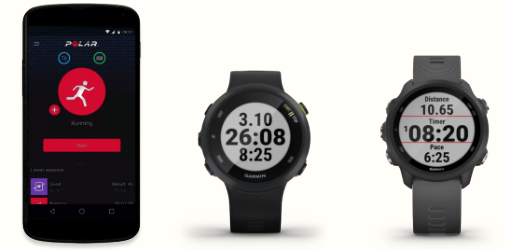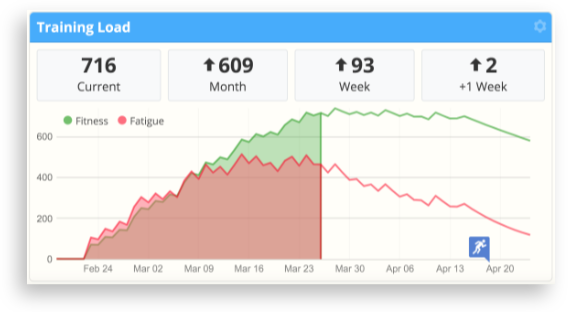Take Your Running Further
How new runners can embrace advanced training methodologies
Without question, the COVID-19 pandemic has been heartbreakingly difficult for people around the world, but some of the repercussions are unquestionably positive. One example is that a great number of people are running for the first time — taking much-needed breaks from sedentary self-isolation. If you recently started to enjoy running, we wanted to show you how you can quickly learn the basics of the sport, and adopt more advanced training techniques, too.

The engine used in a race car and the engine used in running
The above juxtaposition is painfully obvious, but it lies at the core of the sport. In running, the engine that powers you is your body. You don't need a team of experts, a high-tech workshop and lots of money to keep it in top shape. However, there's a decent amount of information that you should understand about running, and the main reason you should understand it isn't so you can win races — it's so you can avoid getting injured.
Unfortunately, injuries are extremely common in running, but if you train smartly you can avoid them. The same scenario happens over and over: a person discovers that they enjoy running, so they start running more and more. The more they run, the more they enjoy it. You see where this is going... They run more than their body can withstand, and they get hurt. Potential spoiler alert: this might happen to the protagonist in the film Brittney Runs A Marathon. The worst part isn't the pain. When you get injured, it can prevent you from running for weeks and months.
The pre-coronavirus world seems so alien now, right?
How much should I run?
When you first start running, there are certain milestones that feel amazing. Running for 10 minutes non-stop without taking a walking break is a big one. When you're able run for a half hour non-stop, it's wise to start keeping track of your weekly distance. Why? It's important not to increase it by more than 10%. Run further than that, and you're risking injury. An awesome way to measure your weekly distance is to track your runs.
How should I track my runs?
The most common way for beginners to track runs is with a smartphone app. The most popular ones these days are Strava, Runkeeper, and Endomondo. A few more options we recommend are Polar Beat, the Suunto app, and iSmoothRun. They work just as you would expect them to. When you're ready to exercise, you launch the app, tell it what sport you're about to do, and then tap the Start button. When you're finished, tap the Stop button, and then save it.
You should track every run, and at the end of the week you'll be able to see how far you went. If you want to do more, you can easily calculate how much more distance is healthy to cover. For example, if you did 3 runs for a total of 9 miles (or 14.48 km), then the following week you should try not to exceed 9.9 miles of distance (or 15.93 km). This formula applies to the first week of your running habit, and every week following it for the entirety of your running career.

Most serious runners use GPS sports watches to track their runs. They're nice because they allow you to leave your phone at home, or stowed away in a pocket or fanny pack. It's easier to glance at a wristwatch for a quick update on your current stats, and most feature built-in optical heart-rate monitors and other sensors that add useful metrics and improve the accuracy of your data. You don't need to spend money on one of these watches now, but if you want to get into it, the Garmin Forerunner 45 and the 245 are both excellent choices.
What can I do with all of this running data?
When you start tracking your runs, you will immediately notice that you're collecting a lot more data than just distance. You will also see pace, duration, calories, and other metrics. It's overwhelming at first, and if you never spend a little time familiarizing yourself with fitness data, it will remain useless. The good news is that you are you, and you're reading this article! You can start mastering this stuff right away with the following resources:
![]() In running, your speed is measured by pace. It takes a little getting used to, but using pace provides many benefits. Read our Understanding Pace in Running article for full info.
In running, your speed is measured by pace. It takes a little getting used to, but using pace provides many benefits. Read our Understanding Pace in Running article for full info.
![]() Cadence is the number of steps you take per minute in running. Higher cadence numbers can provide a smoother, less injury-prone run. Read How to Improve Your Running Cadence to learn more.
Cadence is the number of steps you take per minute in running. Higher cadence numbers can provide a smoother, less injury-prone run. Read How to Improve Your Running Cadence to learn more.
![]() Heart-rate data can be an interesting novelty at first, but it isn't obvious how to use it to be a better runner. Our Heart Rate 101 article explains the 3 most popular ways that runners use heart-rate data.
Heart-rate data can be an interesting novelty at first, but it isn't obvious how to use it to be a better runner. Our Heart Rate 101 article explains the 3 most popular ways that runners use heart-rate data.
How can I advance to the next level in running?
Once you have the basics figured out, you can start utilizing more advanced training methodologies. There's a lot more to becoming a better runner than just accumulating distance from longer and longer runs. A key way to improve is to embrace zone-based training. The idea is that you label different levels of intensity as specific zones, and then as you run, you intentionally target specific zones. This strengthens different types of muscle fibers within a single run, making you stronger and eventually faster.
Heart-rate zones are often used for this kind of training, but if you don't yet have a heart-rate monitor and are only using a run-tracking app, you can use pace zones instead. A typical way to use zones is to create a structured, multi-step workout that has, for example, a 20-minute warmup step in the beginning in a slow zone 2, followed by a 1-minute interval of running quickly in zone 4 immediately followed by 2 minutes of easy running in zone 2. These intervals and recoveries repeat 5 times, and then you cool-down at the end with 10 minutes of easy zone-2 running.
Remember, your top-level goal is to avoid injury. One way to do this is to plan your runs in advance. If you use a fitness platform that has a smart-training calendar and charts that utilize your workout history and planned workouts to predict your performance, you can visualize injury avoidance. When you use these tools in SportTracks, your Training Load chart will have lines for fitness and fatigue. When these lines touch or the fatigue line overtakes fitness, you are in danger of overtraining and injury. You can adjust future workouts so that your fitness and fatigue lines trend positively. Eventually, when races are scheduled again, you can use these tools to peak for race day.
In closing, we would just like to warmly welcome you to the sport of running! It will do wonders for keeping your spirits uplifted and strengthening your immune system, while adding years to your life if you keep it up. You have made a profoundly positive change. Cheers!
| Article written by Sam Mallery, Director of Marketing, Zone Five Software Inc. |


Comments
Hi SportTracks developers! You have a huge backlog of requests over on uservoice, and SportTracks.mobi is quite far from reaching feature parity with the SportTracks 3 desktop software. Could you guys be more open about your roadmap going forward? I have subscribed to this service for since the start of 2015, and it's still mostly a convinient way to check training diary when I don't have access to a computer. But to be honest, I mostly use Strava for that anyway, so at the moment it's only a sync mechanism costing me almost 60 USD a year.
That would be all fine if I believed you were actively developing the service, but you are abandoning ST3 and the last update you made to SportTracks.mobi seems to be in July 2019 (sleep tracking). You have almost 200 suggestions on Uservoice. Only 19 of them are finished and only 3 are marked as "Started". One of those was started in 2015.
As it stands, I have zero expectations for the development of SportTracks.mobi. It seems to be non-existent. I hope you can communicate your plans going forward clearly, start working on the Uservoice backlog and get Sporttracks.mobi as close to feature parity with SportTracks 3 as possible. Look at lap editing for example, it's a bit clunky in ST3, but it's just plain broken and a PITA in Sporttracks.mobi. You have gotten a lot of comments on this (https://sporttracks.mobi/blog/how-to-edit-lap-button-data), please be respectful to your loyal and paying customer by fixing this mess.
Hey there Ståle. Thanks for your interest in our development plans.
Don't worry, we're here improving the SportTracks platform every day, even in the middle of a global pandemic.
A couple misconceptions to address first...
We use Uservoice as a customer idea tracker. It doesn't show our full development priorities or plans. There's a lot of backchannel requests coming in. Ideas are typically deleted a few months after being marked completed (when we remember, lol..). So... there's no sense to view it as a release history. You can't see the hundreds of customer ideas we have implemented over the last 7 years. Those are done and gone. 😊
If you're looking for a history of app updates, check out our blog. We announce every major feature with a "How To" article. Click this link to view them: How To Articles
You can take a look and see a few significant features we've developed since sleep tracking that have been very popular with customers.
Regarding "parity" with the legacy ST3 Windows PC app. We finished the majority 98% of features including the most popular plugins a few years back. There's one or two lingering niche features yet to be added (lap and sensor data editing come to mind); those are prioritized along with other customer ideas.
That's a great transition to your roadmap question.
The intent of SportTracks is to support a much bigger realm of everything athletes need to improve their fitness performance - planning, tracking, analysis, collaboration, all in an easy to use package available anywhere.
So that's a lot different from the sort of PC-based dig into a toolbox approach of the ST3 program. Which means the customers are different, and priorities are different. Fitness tech has also gone through major changes. So for example the lap split/edit idea you brought up is currently #49 in votes, and only 7 customers have voted to prioritize this. Compared to the "strava segments" feature which has 10x the support.
So for roadmap, in general we are looking at improvements to analysis capability and data editing. Some major features will come to the workouts detail page as well as the dashboard. It's mostly driven by the voter counts in the uservoice idea tracker, but we also have a large list of internal ideas as well. And a few innovation ideas up our sleves.. 🙂
More questions? Don't hesitate to contact support. They are there to help!